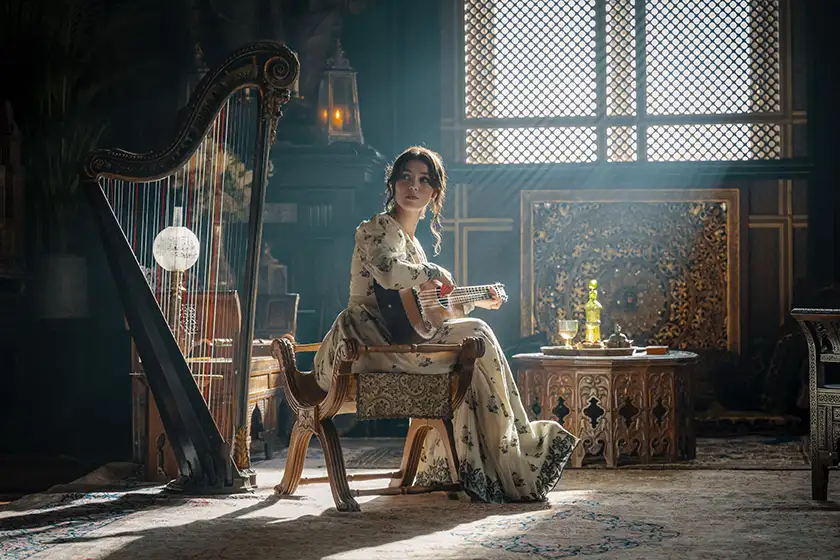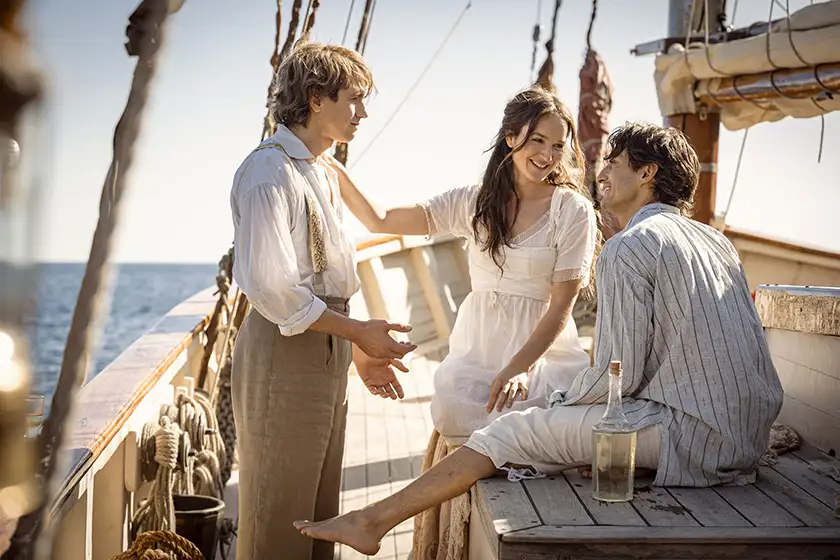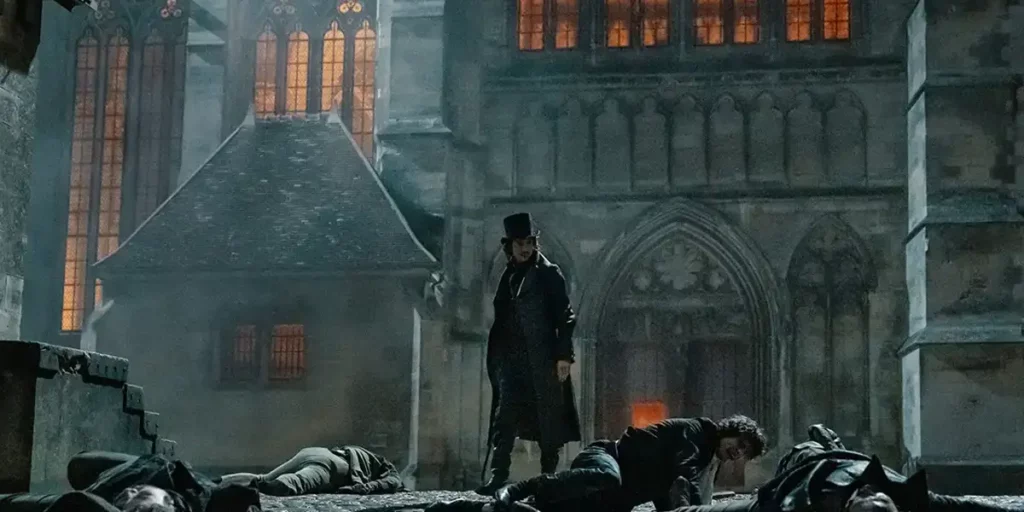Anchored by a gripping lead performance from Pierre Niney, this new adaptation of Alexandre Dumas’ The Count of Monte-Cristo is the stuff the big screen was made for.
Directors: Alexandre de La Patellière & Matthieu Delaporte
Genre: Adaptation, Drama
Run Time: 173′
U.S. Release Date: December 20, 2024
U.K. Release Date: TBA
Where to Watch: In US theaters
After Martin Bourboulon reimagined Alexandre Dumas’ The Three Musketeers in a two-part event last year, Pathé is going all in on more adaptations of Dumas’ body of work with The Count of Monte-Cristo. Directors Matthieu Delaporte and Alexandre de la Patellière have decided to modernize the text for a new audience with the same aesthetic spirit as Bourboulon’s The Three Musketeers.
Premiering at the Fantasia International Film Festival in the Cheval Noir section, The Count of Monte-Cristo is a nearly three-hour long, sprawling epic that enthralls in the classical sense of the term, never straying too far away from what made Dumas’ novel such a riveting piece of French literature, but always with a younger audience with new sensibilities in mind.
To say the film adopts a ‘classic’ structure would be an understatement. We meet Edmond Dantès (Pierre Niney) at the height of his sailing career after saving a woman from drowning in an action sequence with such a massive sense of scale worthy of Gore Verbinski’s Pirates of the Caribbean trilogy. As a result of his heroic act, Dantès is promoted to captain, while Captain Danglars (Patrick Mille) is stripped of his rights. This leads the former captain to frame him for being a conspirator to Napoleon after Danglars retrieves a letter written by the emperor from the woman.
On the day he is to wed the love of his life, Mercédès (Anaïs Demoustier, underused, but always superb), Edmond is arrested and sent to prison after his cousin, Fernand de Morcerf (Bastien Bouillon) agrees with Danglars that he is a Napoleon sympathizer, as Fernand wants to marry Mercédès. Edmond’s family is told that he has died, while he is sentenced to spend the rest of his life in a prison cell. Ten years pass, and Edmond has successfully plotted his escape. He returns to France with one thing in his mind: to avenge his life being taken away by the corrupt individuals responsible for this, Fernand, Danglars, and Gérard de Villefort (Laurent Lafitte).

With the help of André (Julien de Saint Jean) and Haydée (Anamaria Vartolomei), Edmond becomes “The Count of Monte Cristo” and sets his ultimate plan in motion. All of this, of course, is treated linearly, but the directors, alongside editor Célia Lafitedupont, are able to find ways to keep the story fresh and engaging. They frequently intercut scenes in which the Count, André (adopting the façade of Prince Andrea Cavalcanti), and Haydée swindle the people responsible for Dantès’ imprisonment, with them learning how to do so.
The cuts to Edmond training his protégés are sharp and add an extra layer of tension, as one slip up from any of them would potentially mean the reveal of their identity.
Edmond’s plan is meticulous, perhaps too refined. Any small detail missed on his part spells bad news, as Mercédès has a feeling of déjà vu from seeing the Count who has taken a liking to her son, Albert (Vassili Schneider), whose life he saved in a staged attack. If Mercédès trusts her feelings, she could expose the Count for who he truly is, exacerbating the on-screen suspense and romance reawakening inside of Edmond, who has to hide his feelings towards her to ruin Fernand.
With such a hefty runtime, The Count of Monte-Cristo does take some time to get going, particularly in its prison set piece, in which Delaporte, de La Patellière and Lafitedupont frequently fade to black and transition to “five years later,” “ten years later,” “one year later.” These ellipses quickly become redundant since nothing is done to showcase the passage of time in a more cinematically alive fashion. With a traditional story structure, the film’s visual treatment should be more unique than what we ultimately have.
Barring the epic wide shots of the Count’s incredibly technologically advanced abode, cinematographer Nicolas Bolduc’s (who also shot The Three Musketeers) preference for telephoto can make some of its shots look slightly dull and a bit too sludgy (this was also a problem in Bourboulon’s film). Whenever the movie spices its aesthetic slightly and gets into a parallel montage, it showcases that the filmmakers could’ve used this technique far more often than they do. However, the reserved use of more elaborate techniques also works in the movie’s favor since it’s designed to slowly pull us into Edmond’s quest for what he believes is justice.
So when the film ultimately reaches its apex with a sword fight, one hopes the mounting tension would be thrillingly resolved in a duel worthy of the staging Bourboulon had set up in his Three Musketeers adaptations. It’s unfortunate, however, that the editing is all over the place, and strange jump cuts hamper the natural rhythm such a sequence would have, going so far as to completely tarnish the momentum the filmmakers built for the past two and a half hours. With a sense of style that’s been deliberately slow and refined, having a fast-paced action sequence can absolutely work, provided the audience can actively see what’s on screen. And that’s the fundamental problem that unfortunately plagues what could’ve been a powerful conclusion, but instead ends The Count of Monte-Cristo with the biggest of all whimpers.
But what comes before this lackadaisical ending remains strong, particularly in regards to Niney’s towering lead portrayal of Dantès, as he adopts multiple façades to do his bidding. With each face he adopts, one can still see the simmering rage boiling inside Edmond’s face, but his subdued emotions are enough to keep him out of suspicion, even when he brilliantly reveals de Villefort’s most heinous act in front of a group of people. His mastery at commanding the screen is second to none.
And as soon as he adopts the mantra of the Count, that’s when it becomes exciting to see him transform and exact justice on the people who dared frame him for their personal gain.
It’s a real tour-de-force for Niney, and perhaps the best thing he’s ever been in. He’s joined by an equally capable supporting cast, most notably Vartolomei who continues to impress after her breakout portrayal in Audrey Diwan’s Happening, while effectively caricatured villainous turns from Lafitte and Mille chewing up the screen are fun to observe. This, coupled with a standard, but convincing direction from Delaporte and de La Patellière, is what ultimately grips us in the movie’s three-hour tale of corruption, deception, and revenge.

It would be futile to say that The Count of Monte-Cristo reinvents the wheel of Dumas adaptations. When a film is done in the same vein as Martin Bourboulon’s The Three Musketeers, there’s no doubt it would be just as good, if not slightly better, because it adopts a more focused approach to its protagonist. As a result, the 178-minute journey he goes through feels far more engrossing. Its sword fights may not be as exciting as The Three Musketeers: D’Artagnan and Milady. However, while it lacks in its action scope, it more than makes up for its shortcomings with Niney’s career-best portrayal of Edmond Dantès, and the best we’ve seen in any adaptation of Dumas’ novel yet. With such a psychologically active leading turn, no past (or future) transposition of The Count of Monte-Cristo will ever touch what Niney does here. That, alone, is worth the trip to the cinema to bask in its epic and traditional sense of scale and scope.
The Count of Monte-Cristo was screened at the Fantasia Film Festival on July 19, 2024 and will be released in US theaters on December 20, 2024.

